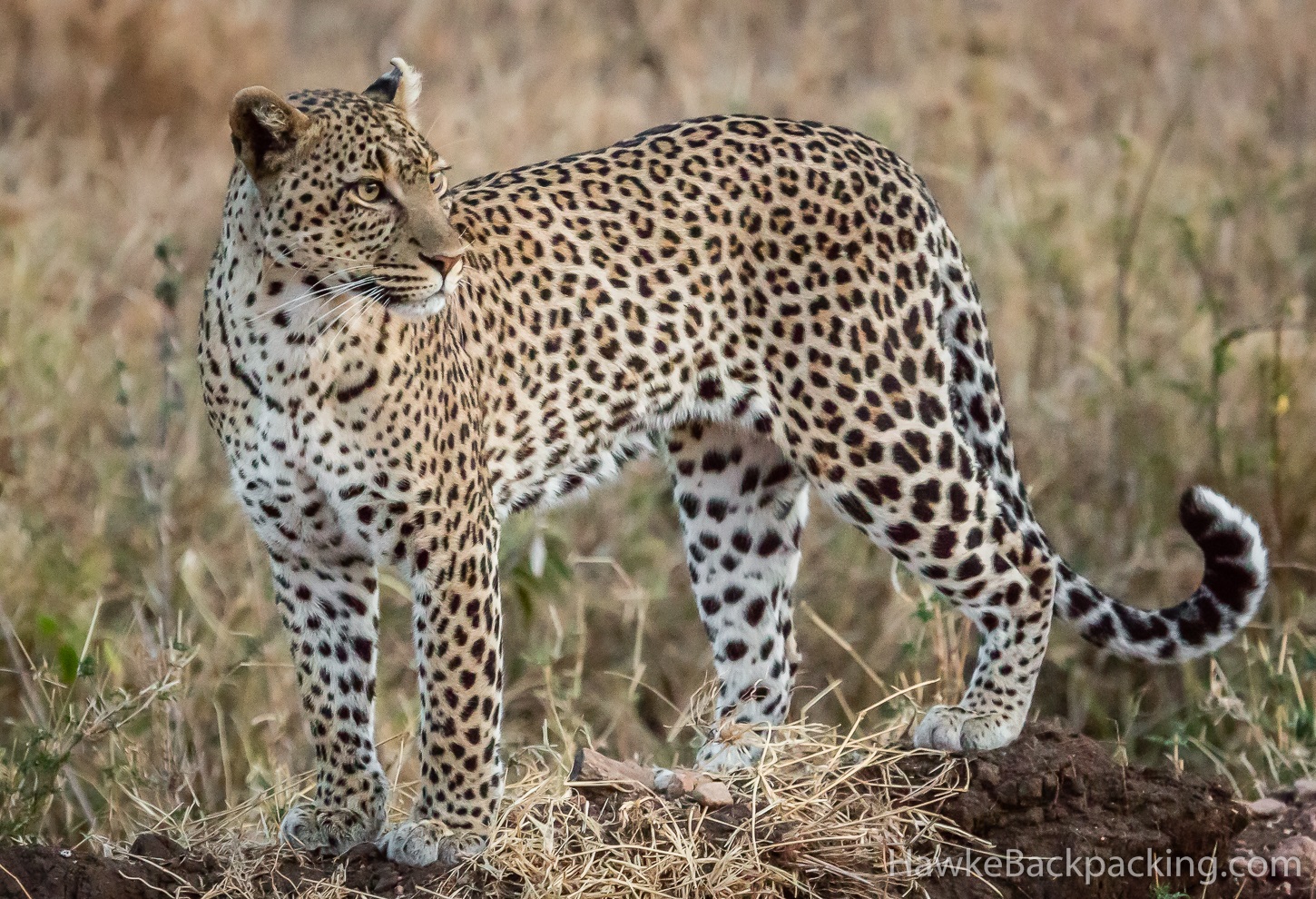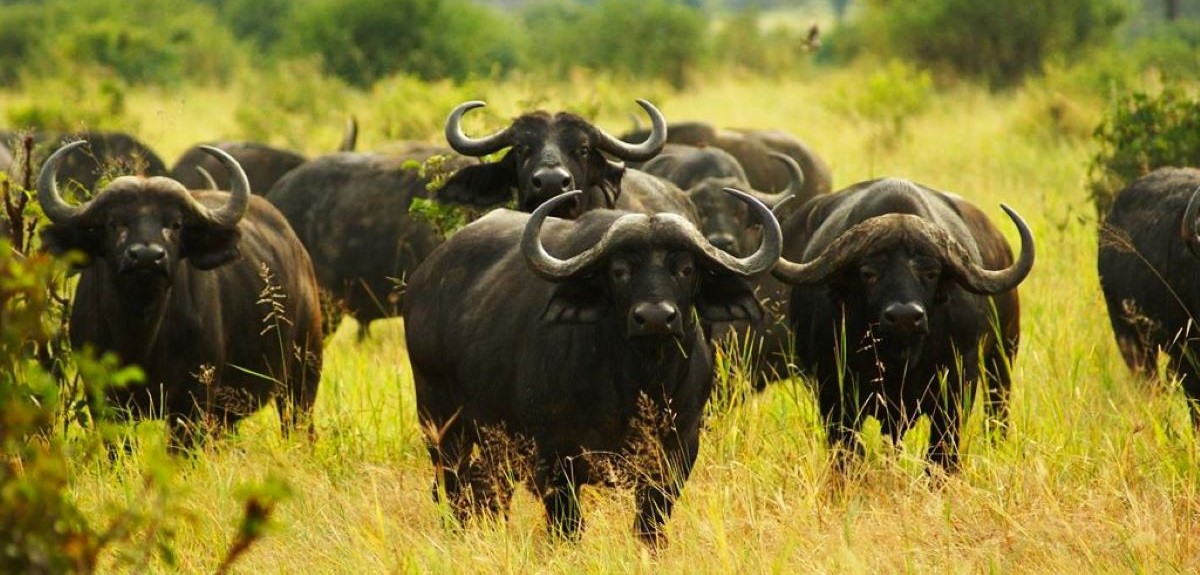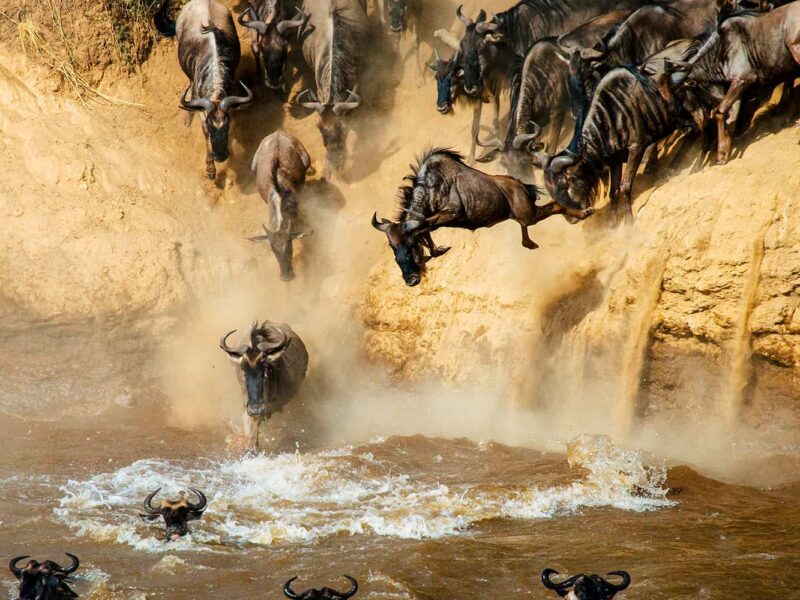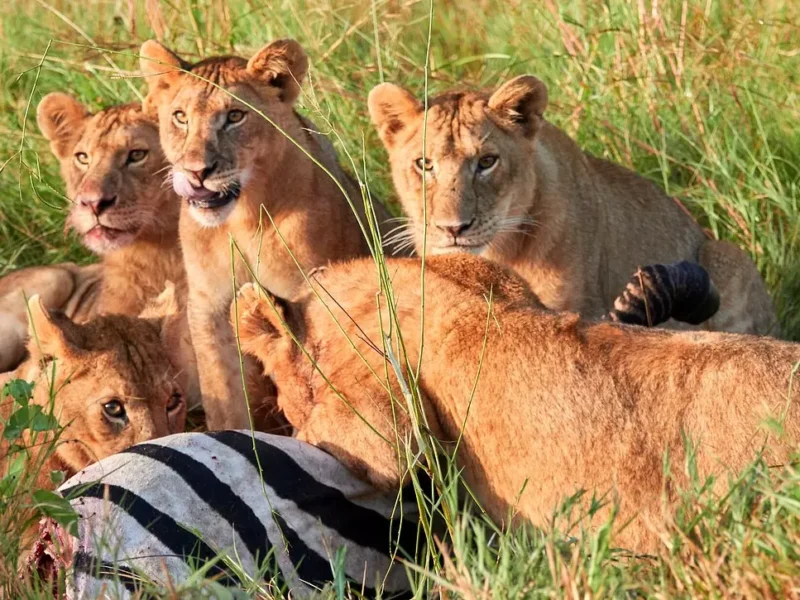
Leopards in Tanzania
April 11, 2025
Ruaha National Park Tanzania
April 11, 2025African Buffaloes in Tanzania
Introduction
The African buffalo (Syncerus caffer), also known as the Cape buffalo, is one of the most formidable and iconic animals in Africa. As a member of the “Big Five”—alongside lions, leopards, elephants, and rhinos—the African buffalo holds a prominent place in Tanzania’s rich wildlife heritage. These powerful herbivores are known for their strength, resilience, and unpredictable nature, earning them both respect and caution among wildlife enthusiasts and predators alike.
Tanzania, with its vast and diverse landscapes, is one of the best countries to observe African buffaloes in the wild. The country is home to large, healthy populations that roam freely in many of its national parks and game reserves.
Physical Characteristics
– Scientific name: Syncerus caffer
– Weight: 500–900 kg (1,100–2,000 lbs)
– Shoulder height: About 1.5 meters (5 feet)
– Color: Dark brown to black, with a stocky body and distinctive curved horns
The horns of male buffaloes are particularly notable—they form a continuous bone shield known as a “boss” at the base, giving them a helmet-like appearance.
Habitat and Distribution in Tanzania
African buffaloes are highly adaptable and thrive in a range of ecosystems. In Tanzania, they are widely distributed across many protected areas, including:
– One of the best-known buffalo habitats in Africa.
– Large herds can be seen roaming the grasslands, often accompanied by zebras and wildebeest.
– The crater’s fertile grasslands support resident buffalo populations year-round.
– Sightings are common, especially in the swampy areas where they wallow and graze.
– Though famous for elephants, Tarangire is home to numerous buffalo herds that rely on the park’s seasonal rivers for water.
– Located in central Tanzania, Ruaha’s savannahs and woodlands provide an excellent environment for buffaloes.
5. Selous Game Reserve (Nyerere National Park)
– This vast reserve holds some of the largest herds of buffaloes in Africa, roaming the wetlands, woodlands, and grass plains.
Behaviour and Social Structure
African buffaloes are highly social animals that live in large herds, sometimes numbering in the hundreds or even thousands.
Herd Dynamics
– Herds typically consist of females, their calves, and a few dominant males.
– Bachelor groups of older males often split off from the main herd, especially during the dry season.
– The size and cohesion of a herd are crucial for protection against predators like lions.
Communication
– Buffaloes communicate through vocalizations, body language, and scent marking.
– When threatened, they may form a defensive circle with the calves in the center and the adults facing outward—a tactic that discourages predator attacks.
Feeding Habits
– Buffaloes are grazers, primarily feeding on grasses, but they can also consume shrubs and herbs when grass is scarce.
– They play an important role in shaping the savannah ecosystem by keeping grasses short and stimulating new growth.
Predators and Threats
Natural Predators
– The main predator of the African buffalo is the lion. Lions often hunt in groups to bring down large buffalo.
– Other predators, such as hyenas and crocodiles, may target weak or young buffaloes.
Human-Induced Threats
Despite their abundance, African buffaloes face various threats:
1. Habitat Loss
– Expansion of agriculture, settlements, and infrastructure leads to the loss of grazing land and migratory routes.
2. Human-Wildlife Conflict
– Buffaloes sometimes raid farms, especially during the dry season when food is scarce, leading to retaliation from farmers.
3. Diseases
– Buffaloes are carriers of diseases such as foot-and-mouth disease and bovine tuberculosis, which can spread to livestock, prompting calls for population control.
4. Hunting and Poaching
– Though legal trophy hunting is allowed in some controlled areas, illegal poaching for meat or sport still poses a threat in certain regions.
Conservation Status and Efforts
– IUCN Status: Near Threatened (due to habitat degradation and disease outbreaks)
– African buffaloes are protected in Tanzania’s network of national parks and game reserves under government law and international agreements.
Key Conservation Actions in Tanzania:
1. Protected Area Management
– Buffaloes benefit from strong protection in places like the Serengeti, Ngorongoro, and Ruaha, where anti-poaching measures and habitat conservation are actively enforced.
2. Veterinary Monitoring
– To prevent disease outbreaks, wildlife authorities monitor buffalo herds for illnesses that could spread to other animals or humans.
3. Community Engagement
– Programs that educate local communities about the value of wildlife and promote eco-tourism help reduce conflict and increase support for conservation.
4. Controlled Trophy Hunting
– In specific wildlife management areas (WMAs), regulated hunting is allowed. Fees collected are reinvested into conservation and local development projects.
5. Research and Monitoring
– Ongoing studies track buffalo movements, population sizes, and health. This information is crucial for adjusting conservation strategies as needed.
Ecological Importance
African buffaloes are keystone species. Their grazing:
– Helps maintain grassland health.
– Opens up landscapes for smaller herbivores.
– Influences predator-prey dynamics by being a key prey for lions.
They also disperse seeds and create pathways through thick vegetation, indirectly benefiting other species.
The African buffalo is an essential part of Tanzania’s natural heritage. Strong, social, and resilient, buffaloes play a vital role in the ecosystem and support the country’s eco-tourism industry. While they are not currently endangered, continued efforts are needed to manage habitat loss, disease, and conflict with humans. With Tanzania’s firm commitment to conservation, African buffaloes are likely to remain a powerful presence on the country’s wild plains for generations to come.




